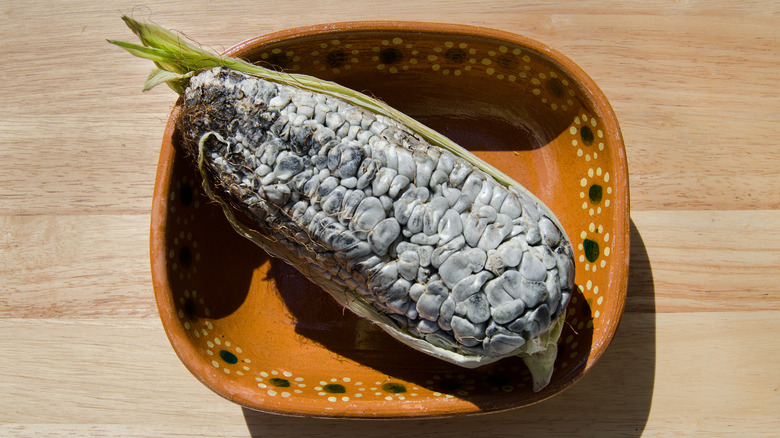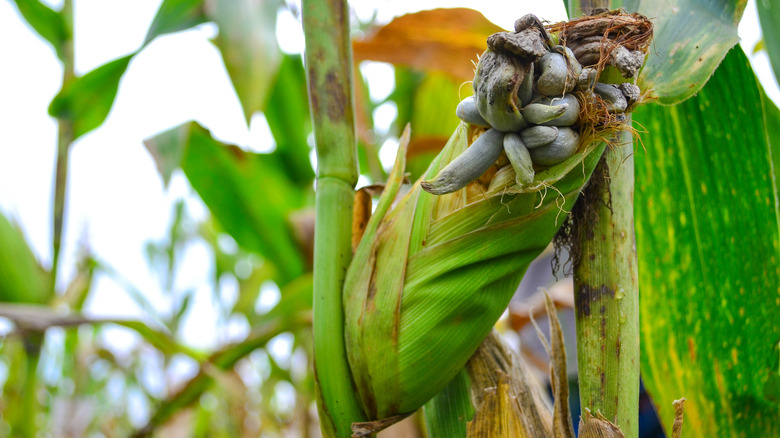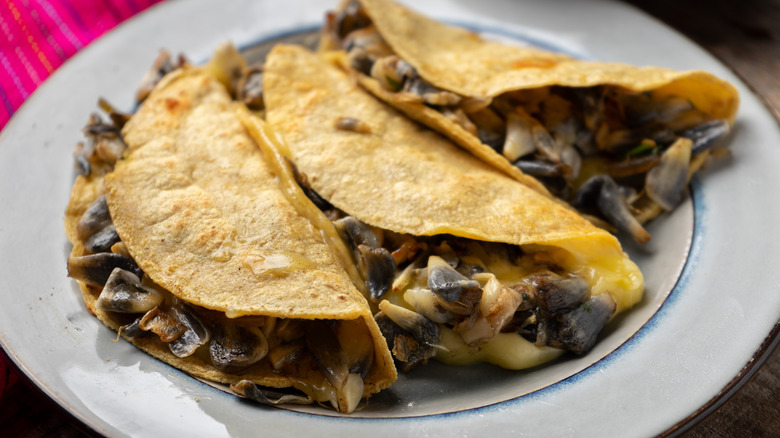Huitlacoche: The Prized Mexican Corn Fungus You Can Actually Eat
In 1989, Josefina Howard, chef and co-founder of Rosa Mexicano, served a huitlacoche dinner at the famed James Beard House. For many in the United States, this was the first introduction to huitlacoche, a fungus that grows on corn.
While some fungus is typically frowned upon for eating, huitlacoche is completely edible. Huitlacoche, also known as cuitlacoche, Mexican truffle, and corn smut, is indigenous to Mexico. It was first cultivated by the Aztecs in Mesoamerica, and since then, it has been ingrained in Mesoamerican cuisine, especially Mexican cuisine. Huitlacoche is also used for medicinal and ceremonial purposes.
Huitlacoche is a common sight in Mexican cuisine, but is rarely seen in dishes outside the country. In the United States, it was hardly found until Howard popularized it. Still, the corn smut has a bad rep outside of Mexico due to the nature of the ingredient, Eater's Sylvio Martins writes, adding that rebranding of the fungus as Mexican truffle adds to the fascination and fear of it as a foreign novelty. Huitlacoche has an extensive history and can be utilized in so many ways. Here's how to get the best out of the corn fungus.
What is huitlacoche?
Huitlacoche typically grows during the rainy season between May and November. The so-called Mexican truffle grows directly on the corn kernels itself, and against the yellow corn, the fungus can balloon into soft spores that are blue and gray in color. It is typically harvested two to three weeks after growing on the corn.
The corn fungus is available fresh and canned. Because of its delicacy, huitlacoche is a little more expensive than corn. It is readily available at markets and food stands in Mexico. In the United States, fresh huitlacoche costs about $15 to $20 per pound.
Huitlacoche has been described as earthy and nutty, a flavor that blends together corn and mushroom. If there is no fresh huitlacoche available, you can buy canned and frozen huitlacoche, which are more black and liquid. The Mexican truffle is regularly served in restaurants across Mexico, and some Mexican restaurants in the States have huitlacoche on their menus. If you want to try the corn fungus at home, there are many ways to do so.
How to cook huitlacoche
Because of its mushroom and corn-like flavors, and minimal cooking time, huitlacoche can essentially be incorporated into almost anything. Rosa Mexicano's executive regional chef Joe Quintana recommends to Food Republic to add huitlacoche to dishes mushrooms are normally in.
Traditionally, the fungus is popular in tamales, soups, and quesadillas. It can even be added to sauces and omelets. Like mushrooms, huitlacoche is a great meat alternative option as it contains high amounts of protein.
Want authentic quesadillas that are found at street vendors in Mexico? Try making huitlacoche with quesillo and blue corn tortilla. Another easy way to use huitlacoche is to serve it up in tacos. Simply sauté it and add it to tortillas with your favorite taco ingredients. It's important to note that when sautéing the corn fungus, don't be alarmed when it turns dark and black. Just as the Aztecs and chef Josefina Howard saw, the possibilities with huitlacoche are seemingly endless.


